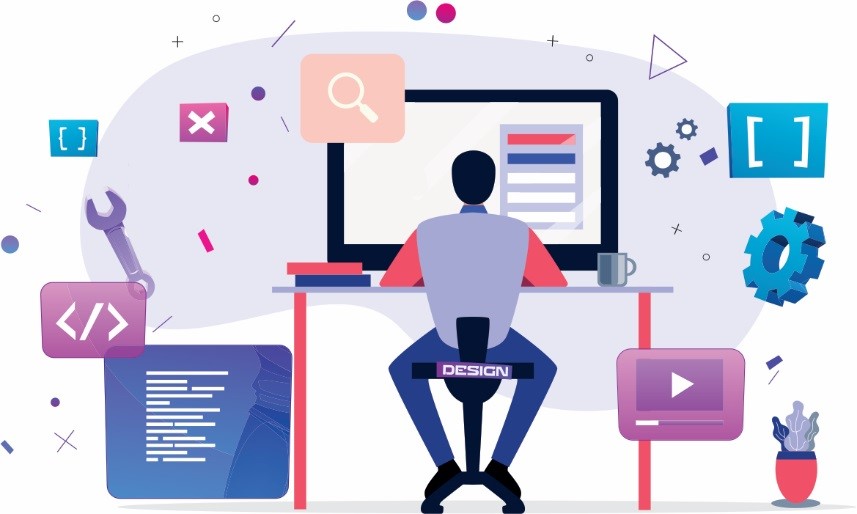The Advantages of a Dedicated Development Team in a Competitive Market
The Advantages of a Dedicated Development Team in a Competitive Market
Blog Article
Devoted Developers vs. In-House Teams: Which Is Right for You?
The choice between utilizing committed designers and preserving an internal team is a substantial one that can impact the trajectory of your tasks and general business method. Dedicated programmers offer a degree of versatility and customized expertise that can be helpful for specific, temporary campaigns. On the other hand, internal teams add to a natural company society and a nuanced understanding of lasting goals. By checking out important variables such as spending plan, task scope, and preferred control, you can much better determine which approach lines up with your business needs. The ramifications of this selection expand beyond instant end results-- take into consideration the broader effect on your business landscape.
Recognizing Dedicated Developers
The growing demand for specialized skills in the tech industry has led to the development of specialized programmers as a viable service for lots of organizations. These professionals are commonly contracted on a job basis, permitting companies to utilize specific knowledge without the long-term commitment related to full time hires. Devoted programmers are usually ingrained within a customer's team, giving versatility and scalability to meet project demands.
This design enables organizations to access a global talent pool, which is specifically helpful in a swiftly advancing technical landscape. Devoted designers can be sourced from different geographical locations, making sure that firms can find the ideal skill established at affordable prices. They typically bring a riches of experience and understanding, having dealt with varied projects across different markets.
Moreover, committed developers can concentrate specifically on the tasks at hand, boosting efficiency and effectiveness. They are outfitted to incorporate seamlessly right into existing operations, teaming up very closely with internal teams to achieve job objectives. This approach not only decreases the burden of employment and training however also allows companies to continue to be dexterous, adapting quickly to altering market needs and technical improvements.
Benefits of In-House Teams

Additionally, internal groups have a tendency to have a deeper understanding of the business's objective, worths, and objectives. This placement can boost employee involvement and motivation, as staff member really feel a lot more connected to their job and the company's success. Furthermore, having a specialized in-house team enables better positioning of purposes and techniques, as these participants are constantly concentrated on the business's priorities.
Internal groups additionally help with quicker decision-making procedures, as they can respond much more rapidly to challenges and modifications. The established relationships and familiarity with firm protocols permit structured operations and lowered miscommunication. Inevitably, the combination of a cohesive culture, alignment with organizational objectives, and effective communication makes in-house groups a valuable possession for many companies, specifically those looking to cultivate lasting growth and innovation.
Expense Considerations
When examining expense factors to consider, both specialized programmers and in-house groups existing distinct financial effects for companies. Involving dedicated programmers normally involves a pay-per-project or per hour price version, which can be cost-efficient for organizations with varying task needs. This technique allows for versatility in scaling resources up or down, ensuring that companies only spend for the solutions they need.
In comparison, internal teams involve taken care of prices, consisting of incomes, benefits, and overhead costs such as office area and equipment. While this model uses higher control and immediate availability of resources, it might result in higher long-term costs, especially if the work does not justify a permanent personnel.
Furthermore, business need to think about the covert costs linked with recruitment and training of internal employees, which can better stress budgets. In many cases, the moment and resources invested in taking care of an internal group can interfere with the organization's core service goals.

Job Management and Flexibility
Task management and versatility are important elements that influence the selection in between in-house groups and devoted developers. Devoted groups frequently have actually developed processes for handling jobs properly, leveraging details approaches like Agile or Scrum, which help with iterative progress and flexibility.

Inevitably, the choice between dedicated designers and internal groups depends upon the desired degree of adaptability and the specific project management requirements. Firms should evaluate their functional characteristics, project intricacy, and source availability to establish which choice lines up best with their calculated goals.
Making the Right Option
Picking the ideal growth method-- in-house groups or committed designers-- requires a mindful assessment of various variables that line up with a firm's strategic objectives. hire dedicated developers. First, think about the nature of the task. Dedicated programmers may be more appropriate if it requires specialized skills or a quick scale-up. Conversely, in-house groups can supply much better continuity and combination with existing employees.
Next, review your budget plan. Dedicated developers typically offer an affordable remedy for temporary tasks, while internal teams might sustain higher long-term expenses because of incomes, advantages, and expenses costs. Examine the level of control and collaboration desired; in-house groups typically cultivate stronger interaction and placement with company culture.
If immediate outcomes are essential, specialized designers can be onboarded rapidly, whereas constructing an in-house group takes time for employment and training. If constant advancement is crucial, investing in an in-house team might yield far better returns over time.
Final Thought
In conclusion, the decision between internal teams and committed programmers hinges on project needs and business objectives. Alternatively, in-house groups grow a natural culture and deeper alignment with long-term objectives.
The choice in between using committed designers and keeping an internal group is a substantial one that can affect the trajectory of your projects and overall service approach.Task management and versatility are critical factors that influence the selection in between specialized developers and internal teams. hire dedicated developers.In contrast, internal groups might stand out in maintaining a constant task management structure due to their knowledge with the company's society and long-term goals. Dedicated developers frequently present a cost-efficient remedy for temporary tasks, while internal teams might sustain greater long-term costs due to software development partner wages, benefits, and expenses prices.In verdict, the choice in between in-house teams and dedicated developers pivots on task demands and organizational purposes
Report this page